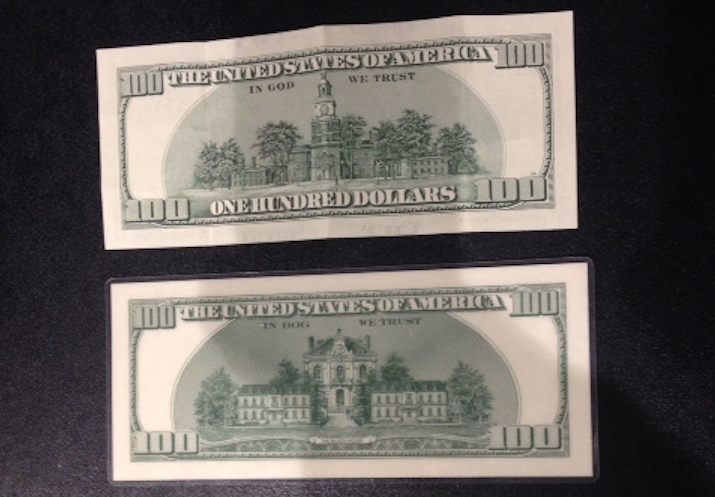Top Billing

If you’re making a movie, you probably want it to be as realistic as possible. Props are a critical part of that recipe — everything should fit the setting and time period of the scene you’re trying to shoot. For most items, that’s perfectly doable. It’s not hard to find an actual item, as you can often rent one from a prop rental place. If not, one can find fake but realistic enough looking versions of just about anything. Either way, it’s typically not a problem.
But let’s say you wanted to film a scene which called for large amounts of money. You don’t want to use real money — it’s expensive, hard to keep track of, and easily stolen. So studios tend to use fake money. That, however, runs a separate problem: the specter of counterfeiting.
In 2001, the Los Angeles Times reported on one such incident. During filming for the Jackie Chan/Chris Tucker movie Rush Hour 2, the script called for an explosion which shot hundreds of thousands of dollars in the air. They didn’t use real currency; all of the “money” used was fake. Some of the people working on the shoot took some of the prop money for themselves, which isn’t a big deal because the movie producers didn’t have much of a use for the money going forward anyway.
But then, something went wrong. Some of the prop bills made their way into circulation — people on the set had used the fake money to buy real things. That prompted the Secret Service, which is in charge of investigating counterfeiting schemes, to get involved. After tracking down the source of the fake money, the agency seized more than $200 million in prop money from the prop company, Independent Studio Services (ISS). Priceonomics reported that the faux bills cost ISS $8 real per $10,000 fake — that’s a loss of $160,000.

So, how does one make a non-counterfeit prop dollar? Again per the LA Times, “federal law requires that reproductions be 75% or smaller, or 150% or larger than the size of real bills. If colors other than black and white are used, only one-sided copies may be made, and negatives, plates or disks of the bills must be destroyed after use.” But Gregg Bilson, Jr., the head of ISS, told Priceonomics that the law is unrealistic: “Honestly, if you followed [the Secret Service’s] instructions, you may as well use Monopoly money. Feature films demand a certain bar of quality, so everyone is asked to break law in a sense by making prop money.”
Instead — and it wasn’t good enough — ISS’s bills had 28 points of difference. A real bill and a prop can be seen above (via Priceonomics, slightly larger version here), and you can see why the prop would give the Secret Service pause. The bottom bill looks good enough, and really, who would notice that it says “In Dog We Trust”?
Bonus fact: In 2000, Jackie Chan was turned into a cartoon hero in the eponymous series “Jackie Chan Adventures.” The cartoon, which ran five seasons, featured a live-action version of Chan who introduces each episode and an animated version who is working with law enforcement to prevent a criminal syndicate from doing all the bad things criminal syndicates do. The live-action version of Chan is played by Chan himself, as you’d expect. But the cartoon Jackie Chan isn’t voiced by Jackie Chan. Instead, the voice actor is a guy named James Sie — whose claim to fame is as a Jackie Chan impersonator.
From the Archives: Paper Trail: Want to run off your own fake money, using a laser printer or photocopier? Here’s why you shouldn’t/can’t.
Related: $10k in prop money. It’s $25, not $8, in real money.
